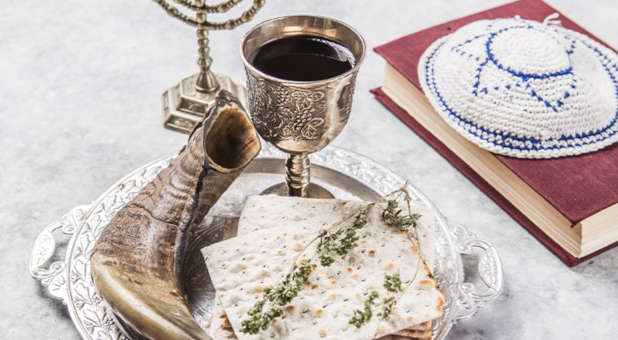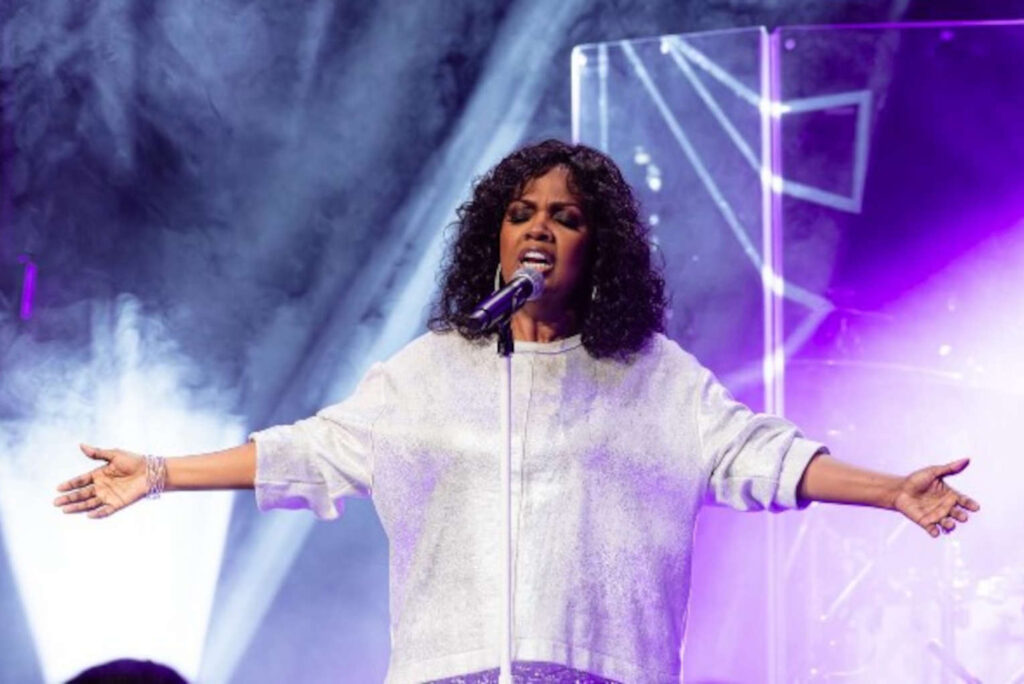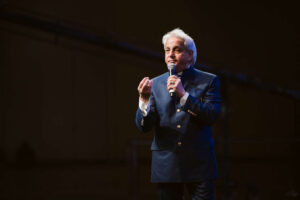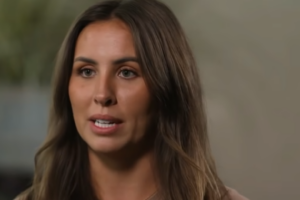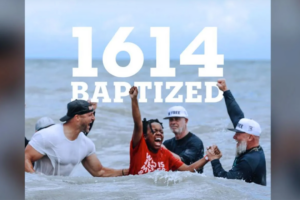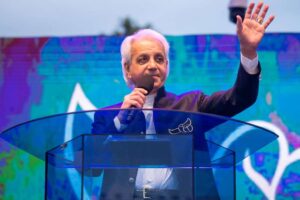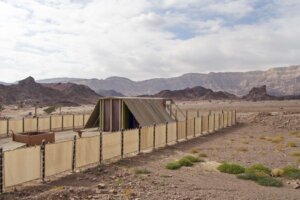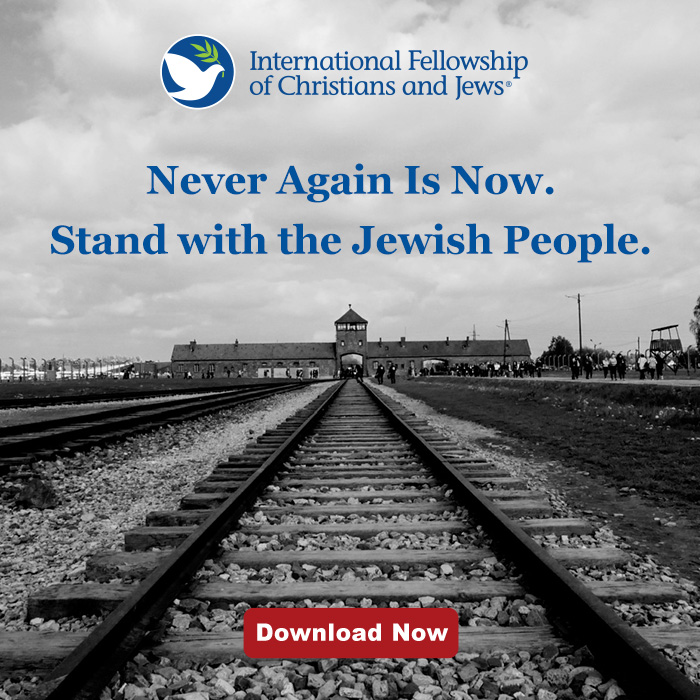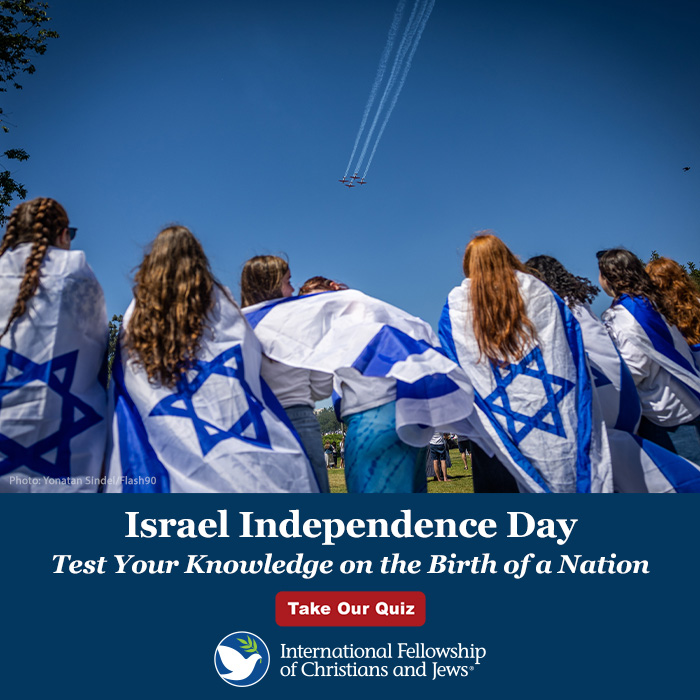The Torah reveals to us God’s holy days. Leviticus 23:4 says, The seven holy days are:
The 7 Feasts of Leviticus 23
1. Passover (verse 5)
2. Feast of Unleavened Bread (6-8)
3. Feast of First Fruits (9-14)
4. Feast of Weeks (15-22)
5. Feast of Trumpets (23-25)
6. Day of Atonement (26-32)
7. Feast of Booths (33-43)
People often think of these as Jewish holidays—and they are—but they are not the unique property of Judaism. First and foremost, they are God’s holy days. These holy days were first given to Jewish people, but their significance goes beyond the Jewish people. As Messiah was promised to Israel but was given through Israel to the whole world in order that “all the families of the earth will be blessed” (Gen. 12:3), so too these cherished days have significance for all of God’s people, Jew and Gentile alike.
These holy days have dual applications then: they had immediate meaning for the Jewish people in their original historical context, but they are also prophetic shadows of Messiah Jesus and are applicable for believers today.
The 4 Feasts Fulfilled by Jesus’ First Coming
Every single one of the redemptive acts Yeshua accomplished in His death, burial, Resurrection, and the sending forth of His Spirit were all strategically aimed to take place during the spring holy days. Yeshua was crucified on the Feast of Passover, buried during the Feast of Unleavened Bread, and rose during the Feast of First Fruits. Then after His Resurrection, the Spirit of God came on Shavuot (the Hebrew word for Pentecost). Each of these feasts directly culminated in Messiah and prophetically tell the story of His life and mission.
1. Passover: Lev. 23:5
Passover in the Old Testament
The first of these feasts is Passover. This is the springtime holy day that commemorates the Israelites’ deliverance from Egyptian bondage. In Leviticus 23:5, we read, “In the first month, on the fourteenth day of the month at twilight is the Lord’s Passover.” In its original context, the Passover story is about how the Lord used the blood of a Passover lamb to deliver the children of Israel out of bondage in Egypt. Each family would take the blood of an unblemished lamb and apply that blood on the doorpost of their home. When the angel of death, which was God’s judgment, passed through the land of Egypt that fateful night, the judgment passed over every home that had been marked by the blood of the lamb.
Jesus’ Fulfillment of Passover
The New Testament shouts the proclamation that a new Passover Lamb has come. As Yeshua was about to begin His ministry, John the Baptist saw Him coming toward him and cried out, “Behold, the Lamb of God who takes away the sin of the world!” (John 1:29). This is bookended in the Book of Revelation—the book of last things—where Yeshua is referred to as the Lamb of God 31 times. From the beginning to the end of the Brit Chadashah (New Testament), Yeshua’s role as the Lamb of God is central to understanding who He is and what He came to do.
When Yeshua celebrated that last Passover meal with His disciples, He lifted up the matzo and wine to tell them that His own body was about to be broken and His own blood shed for their salvation. He was their Passover Lamb. Yeshua is the ultimate fulfillment of the feast, which is why Paul says plainly in 1 Corinthians 5:7 that Christ has become our Passover.
2. Feast of Unleavened Bread: Lev. 23:6–8
Unleavened Bread in the Old Testament
Leviticus 23:6 reads, “Then on the fifteenth day of the same month there is the Feast of Unleavened Bread to the Lord; for seven days you shall eat unleavened bread.” This feast marked a remembrance of when the children of Israel had to leave Israel in haste. To prepare for this feast, which begins the day after Passover, Jewish families remove all leaven from their homes and eat only unleavened bread, called matzo. As the children of Israel anticipated their deliverance from Egypt, God instructed them, “When you hear My voice, leave in haste and do not wait for the bread to rise.” (See Deuteronomy 16:3.) They were to instantly obey and move out. Thus, the Feast of Unleavened Bread speaks of instantaneous and full obedience.
Jesus’ Fulfillment of Unleavened Bread
Yeshua was buried during the Feast of Unleavened Bread because He is the absolute fulfillment of it. Jesus is the One who perfectly and immediately obeys the Father. During the last Passover that Yeshua shared with His disciples, He took the matzo, broke it, and gave it to them, saying, “This is My body which is given for you; do this in remembrance of Me” (Luke 22:19). The Feast of Unleavened Bread retains its original meaning but took on its fullest and final meaning when Yeshua Himself, the Bread of heaven, was broken and given unto us! “Let us therefore celebrate the festival, not with the old leaven, the leaven of malice and evil, but with the unleavened bread of sincerity and truth,” (1 Cor. 5:8).
3. Feast of First Fruits: Lev. 23:9–14
First Fruits in the Old Testament
We find this feast described in Leviticus 23:10–11: “Speak to the sons of Israel and say to them, ‘When you enter the land which I am going to give to you and reap its harvest, then you shall bring in the sheaf of the first fruits of your harvest to the priest. He shall wave the sheaf before the Lord for you to be accepted.'” Each individual farmer—each worshipper—was to bring their first sheaf to the priest, who would then lift it up and wave it before the Lord. The Lord would then accept the farmer’s entire harvest as being acceptable and dedicated to Him.
Jesus’ Fulfillment of First Fruits
The Feast of Passover is related to Jesus’ death and the Feast of Unleavened Bread to His burial. Now, the Feast of First Fruits will carry us fully into the event of His Resurrection.
Consider that this is a spring feast—the first of the spring harvest. Winter has passed and everything that was once dead is coming to life again. It is like the earth has been raised from the dead.
This all takes on new meaning when we see that Yeshua, who was dead, supernaturally came back to life on this holy day. Then He ascended to heaven as “the first fruits of those raised from the dead.” (See 1 Corinthians 15:20, 23.) Yeshua said in this verse in Revelation 1:17–18, “I am the first and the last, and the living One; and I was dead, and behold, I am alive forevermore.”
Here again, the timing of this feast too is significant. It took place on the day after the Sabbath, which is Sunday. On which day did Jesus rise from the dead? Sunday! Just as Yeshua Himself actually became the unleavened bread that was broken for us, He became the first fruit of the harvest brought back to life. As the sheaf was lifted up and waved before the priest, so too, Yeshua rose from the dead and presented Himself to the Father. And just as in ancient Israel, God accepted the whole harvest through the first fruits offering, so it is today—we are accepted by Father God through the first fruits offering of Messiah! Yeshua rose from the dead on the Feast of First Fruits, both fulfilling it and bringing it to its climax.
4. Feast of Weeks—Pentecost: Lev. 23:15–22
Feast of Weeks in the Old Testament
Leviticus 23:15–16 says, “You shall also count for yourselves from the day after the sabbath, from the day when you brought in the sheaf of the wave offering; there shall be seven complete sabbaths. You shall count 50 days to the day after the seventh sabbath.”
Shavuot (Pentecost) was originally an agricultural feast day, but over the years, traditional Judaism associated this day with the day the Lord gave the Law at Mount Sinai. During Shavuot, we remember how God appeared in glory to Israel on Mount Sinai, writing His law on multiple tablets of stone. (See Exodus 19:16–19.)
During this climactic event, the mountain itself shook, and a cosmic shofar began to blast from heaven. As the sound of the trumpet reached a crescendo, the Lord spoke—He “thundered” and “descended upon it in fire.” The people at the mountain were so terrified, they were happy to let Moses go up the mountain. They thought, Moses, “God can talk just to you, and you can talk to us” for Him.
But a time would come when the Law and the Lawgiver would become much closer. Jeremiah 31:33 says, “‘But this is the covenant which I will make with the house of Israel after those days,’ declares the Lord, ‘I will put My law within them and on their heart I will write it; and I will be their God, and they shall be My people.'” Ezekiel also anticipated this time when he wrote that Yahweh would give His people a new heart and put a new Spirit within them (Ezek. 36:26). The Law that was once written on stone would be etched in our hearts.
Jesus’ Fulfillment of Shavuot
Fifty days after Yeshua’s Resurrection, 120 of his followers were gathered together in the upper room celebrating Shavuot. As they were there recalling again how God appeared in fire on top of the mountain and gave Moses the laws and commandments for His people, suddenly the living Yahweh appeared to them afresh and anew.
As He did on Sinai, God appeared again in fire right there in the upper room. And it wasn’t just one fire this time—an individual tongue of fire appeared over each of the 120 who were sitting there. This encounter inaugurated the time when the Lord would no longer speak to His people by writing on tablets of stone. Instead, He was fulfilling the prophecies of Ezekiel and Jeremiah, writing the law on their hearts. This living tongue that brought the fresh fire of God came and filled each of them. They had received the Ruach HaKodesh, the same Spirit that had filled the Messiah they loved and that He had promised to send them.
The Three Feasts Fulfilled by Jesus’ Second Coming
All the holy days that we have covered so far, the spring holy days, were fulfilled by Jesus at His first coming. These spring feasts—Passover, Unleavened Bread, First Fruits and Shavuot—happen within just a few months of one another. But interestingly, in the biblical calendar, there is now a long pause between the time when the spring holy days end and fall holy days begin. This gap is prophetic and coincides with the relatively long period of time between Yeshua’s first and second coming. In the same way that the spring feasts coincided with Yeshua’s first coming, the fall feasts—Feast of Trumpets, Day of Atonement and Tabernacles—coincide with His Second Coming.
5. Feast of Trumpets—Rosh HaShanah: Lev. 23:23–25
Feast of Trumpets in the Old Testament
Leviticus 23:24 says, “In the seventh month on the first of the month you shall have a rest, a reminder by blowing of trumpets, a holy convocation.” Interestingly, there is actually very little about this holy day called the Feast of Trumpets (Yom Teruah) except its timing (it is held on the first day of the seventh month, which in Hebrew is called Tishri) and the fact that it is marked by the blowing of the trumpets.
But what is the blowing of the trumpets to remind Israel of? The Israelites are reminded that the first time they encountered their God, Yahweh, as a nation, the experience was announced with the blowing of a divine trumpet (Exod. 19:10-11, 16-20). In this encounter, the Lord revealed His glory to approximately 3 million Israelites. As the trumpet that Israel heard from the heavens grew louder and louder, Israel, who was not ready to meet their God, just stood at the base of the mountain and trembled. But Moses, who was the humblest man on the earth, was ready. So as the trumpet sounded, instead of staying at the base of Mount Sinai cowering in fear, Moses ascended the mountain to meet his God.
Jesus’ Fulfillment of the Feast of Trumpets
The Feast of Trumpets is a picture of the rapture when Jesus will return with the blowing of a trumpet from heaven. Those who are not prepared to meet Him will tremble in unspeakable fear. But those of us who are ready to meet our God will ascend and meet Messiah in the air just as Moses ascended the mountain to meet our God. In 1 Thessalonians 4:16–17, Paul writes, “For the Lord Himself will descend from heaven with a shout, with the voice of the archangel and with the trumpet of God, and the dead in Christ will rise first. Then we who are alive and remain will be caught up together with them in the clouds to meet the Lord in the air, and so we shall always be with the Lord.”
In both the past and future, the blowing of the shofar announces God’s manifest presence and kingdom. Next time the Lord’s shofar blows it will be to signal the return of the Messiah and His glory will be fully manifested to the entire world!
6. Day of Atonement—Yom Kippur: Lev. 23:26–32
Day of Atonement in the Old Testament
The Feast of Trumpets is followed by the next fall holy day called, Yom Kippur or the Day of Atonement. Yom means “day,” and kippur means “covering,” so this is literally “the day of covering.” We read about this in Leviticus 23:27, “On exactly the tenth day of this seventh month [still the month of Tishri] is the day of atonement; it shall be a holy convocation for you, and you shall humble your souls and present an offering by fire to the Lord.”
The Day of Atonement was when the high priest would go into the Holy of Holies, where the Ark of the Covenant, which housed the Ten Commandments, was kept. The high priest would take the blood of a bull and the blood of a goat and pour it on top of the Ark of the Covenant. When the Lord saw the blood, He overlooked the sins of His people for a year. The Day of Atonement is all about the blood that is shed for the forgiveness and covering of sin. The Lord can only be in covenant with humanity, whom He created in His own image, through a blood atonement. “For the life of the flesh is in the blood and I have given it to you on the altar to make atonement for your souls; for it is the blood by reason of the life that makes atonement,” (Lev. 17:11).
Jesus’ Fulfillment of the Day of Atonement
The whole arc of the book of Hebrews is to tell us that Yeshua, in sacrificing His own life, cemented the eternal blood covenant once and for all.
In the old covenant, the high priest had to take the blood of a bull and a goat into the Holy of Holies afresh every year because they could never permanently remove sin. It was just a shadow or a type of the real payment that was coming—the blood of Yeshua, which took away our sin forever.
This is why we read in Matthew 27:51 that when Yeshua was crucified, the veil in the Temple that separated mankind from the Holy of Holies was ripped in two. The blood of the sinless One was shed, opening the way for us to be in relationship with God forever. This feast has been fulfilled, insofar that Yeshua’s blood has already been shed and we are able to be in fellowship with God now.
But there is also a prophetic way that Yom Kippur too will find its ultimate fulfillment yet in the future. This is the turning of the Jewish people to Messiah Yeshua. Zechariah 12:10 says, “I will pour out on the house of David and on the inhabitants of Jerusalem, the Spirit of grace and of supplication, so that they will look on Me whom they have pierced; and they will mourn for Him, as one mourns for an only son, and they will weep bitterly over Him like the bitter weeping over a firstborn.”
When He returns, He will lift the veil from their eyes! The book of Revelation foretells this glorious event: “Behold, He is coming with the clouds, and every eye will see Him, even those who pierced Him; and all the tribes of the earth will mourn over Him. So it is to be. Amen,” (Rev. 1:7). He will cover His people and the kingdom of God will be fully inaugurated in the earth.
7. Feast of Booths—Sukkot: Lev. 23:33–43
Sukkot in the Old Testament
The last of the fall feasts is called Sukkot, the Feast of Tabernacles. This feast is a joyous time of giving thanks to God for His provision. We read about this feast in Leviticus 23:34–42: “On the fifteenth of this seventh month is the Feast of Booths [Tabernacles] for seven days to the Lord….You shall thus celebrate it as a feast to the Lord….It shall be a perpetual statute throughout your generations….You shall live in booths for seven days.”
During this feast, in many Jewish homes and synagogues, a sukkah—meaning a tabernacle or booth—is built out of lumber, grass, or any other natural substance and serves as a temporary structure. It is then decorated with natural materials such as tree branches, leaves, flowers, vegetables and fruit.
In the celebration of Sukkot, many people will eat their meals and sleep in the sukkah for the entire seven days of the feast. While in the sukkah, Jewish people remember how they had nothing in the wilderness but God. They lived in these temporary structures. They had no insurance policies. For 40 years, God supplied their every need. He fed them supernaturally with manna, gave them water out of a rock and caused their clothes not to wear out. They had nothing but God—and He was enough! So now once a year, the children of Israel build these temporary shelters to remember the time in the wilderness when He was all they had to cling to.
Jesus’ Fulfillment of Sukkot
Jesus will one day return and tabernacle with His people on the earth once again. And during His 1,000-year reign, all the peoples of the earth will come to celebrate the Feast of Tabernacles every year with Him in Jerusalem (Zech. 14:16).
The Feast of Tabernacles reminds us how the Lord tabernacled with His people. His presence was seen 24-7 each and every day as a pillar of fire by night and a glory cloud by day hovering over the tabernacle for the 40 years Israel remained in the wilderness. Similarly, God’s presence is with you and me today wherever we go, even to the end. Yeshua said, “I am with you always, even to the end of the age,” (Matt. 28:20).
This feast will find its ultimate fulfillment when Yeshua reigns throughout eternity as God tabernacles with His people in an eternal new heaven and new earth as these verses attest.
Join Charisma Magazine Online to follow everything the Holy Spirit is doing around the world!
Rabbi Kirt A. Schneider is the host of the popular TV and radio broadcast Discovering the Jewish Jesus. For over 30 years Rabbi Schneider has taught how Jesus fulfilled Messianic prophecy and completes the plan of the Messiah. Schneider is the author of several books, including Rivers of Revelation, The Lion of Judah, The Book of Revelation Decoded and Awakening to Messiah.
See an error in this article?
To contact us or to submit an article


